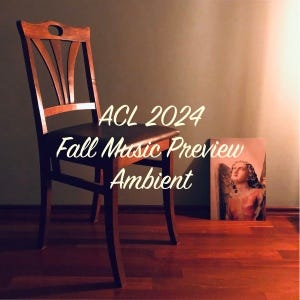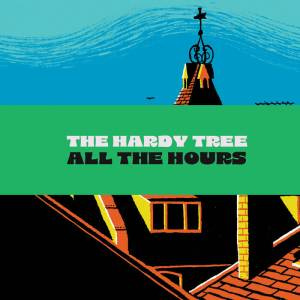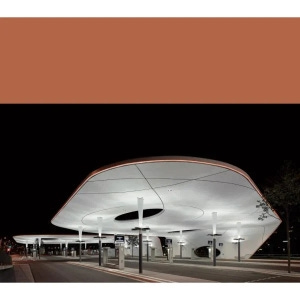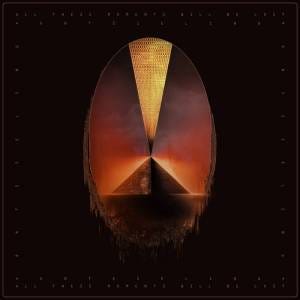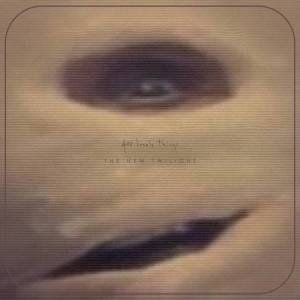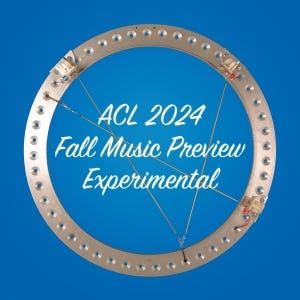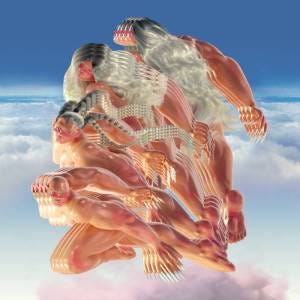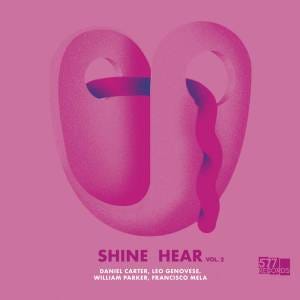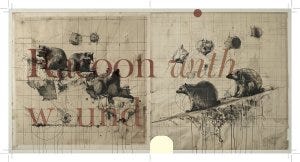Dear Listeners, Joseph here with the first part of my colleague Richard Allen’s ACL Fall Music Previews 2024. Look for part ii tomorrow!
Contents
Fall Music Preview 2024 ~ Ambient
Fall Music Preview 2024 ~ Drone
Fall Music Preview 2024 ~ Experimental
Fall Music Preview 2024 ~ Ambient
Mark your calendars: next Friday is not only the first big release date of fall, but it may end up being the biggest release date of the season. We are currently tracking nearly 100 instrumental and experimental EPs and albums with a release date of September 6, so many that we started reviewing them in August. Our week-long Fall Music Preview will add hundreds more, and these are only the ones announced by late summer! We’ve scoured the internet to bring you the widest array of upcoming releases we can find, hoping to get you as excited as we are about the changing of the seasons. Happy meteorological fall!
Our cover image is from Polaroid Notes’ Quiet Rooms, covered below and up for pre-order this Friday!
We begin with an equinox release from the Ceremony of Seasons imprint. This time, VISUALS Wine and the Ritual of Senses Wine Club has paired a botanical aperitif wine with a cassette from Farewell Phoenix, another artist from the surprisingly diverse Asheville music scene. The album shifts subtly between ambient and electronic, mirroring the gradual shift between seasons and the slow transition from green to brown. The Angels In These Fields is out September 22.
Masayoshi Fujita is a master of vibraphone and marimba, and continues to stretch his wings on Migratory. The album features two of the most unexpected guest appearances of the season, from Moor Mother and Hatis Noit, and each works perfectly. This is an album to play while the birds are flying overhead to their winter homes (Erased Tapes, September 6). Another artist reeling in the guest stars, Alaskan Tapes offers the elegant, seasons-spanning Something Ephemeral, with appearances from Moshimoss and Andrew Tasselmyer. There’s even t-shirts in ephemeral black or green (Nettwerk, September 20). Also on Nettwerk, Black Brunswicker returns with her specific take on bucolic ambience, filled with vocal and instrumental loops and informed by nature. Down at the Creek is the first single from Been Around Here Before, due September 27.
Ibukan Sunday‘s Harmony/Balance is one of fall’s more distinct offerings, incorporating West African ambience and Hindi philosophy. Interspersed throughout the recording, subtle Nigerian field recordings contribute a sense of place (Phantom Limb, September 20). Pietu Arvola injects Meidän täytyy valvoa jottemme nukkuisi, sillä maailma on liukas with field recordings taken from a Finnish forest; decorated with bells and electronics, the album resists the temptation to retreat into apathy. The lead single was released under the artist’s prior moniker of Bereen Ondo (Paa jotaki, September 9). Layers, loops and light gauze make John Davis‘ Landlines a smudged experience. Snippets of instrumentation expose the pointillist approach (Students of Decay, October 3). After finding an old high school piano cassette, William Basinski went to work re-contextualizing and reworking the tape. September 23rd is the first release in his Arcadia Archive series (Temporary Residence Ltd., September 23).
There’s always something new from Whitelabrecs, one of the most dependable and consistent labels around. September 21 sees the drop of two new albums. Swedish duo Henrik Meierkord and Knivtid brings a bit of modern composition to I ett annat land as they explore the wonders of travel. Polaroid Notes wrestles with tinnitus on Quiet Notes, hoping to achieve physical and aural calm. After years of suffering with increasing tinnitus, Michael Scott Dawson invited a host of collaborators to help him realize his latest vision. “The clicks, ringing tones, and hiss in his ears had been drowning out the ringing tones, clicks, and hiss in his studio.” On The Tinnitus Chorus, the sounds seem like friends (We Are Busy Bodies, September 6). Home Normal launches its fall slate tomorrow with Far Away Nebraska‘s peaceful Come partire in un giorno di primavera and will continue with Michael Santos‘ white noise-dominated Defocus on October 4.
Shimmering Moods has just announced its September bundle for albums being released September 27. The playlist below includes pieces from Stas Ostrikov‘s Psaltery, an investigation of a traditional instrument with a very cool cat on the cover (see right); Protest on the Mountain (remixes), including 21 remixes of a piece by Stefan Christoff & Aidan Girt, including contributions from KMRU, Jeremy Young, Jonas Bonnetta and our very own Joseph Sannicandro; the upbeat, positive-toned Atelier Silencio, from YDVST; Nosar‘s peaceful, rain-watching A Window With a View; and Strata-Gemma & MA Spaventi‘s Ristoranti Innovativi, the jazziest and most electronic of the pack, in which we can intuit some disco chill.
The Hardy Tree (Frances Castle) releases All the Hours, a gorgeous 20-minute piece that traces a day from dawn to dusk, as part of the Clay Pipe mini-CD series. Clay Pipe Music was our Label of the Year in 2023, and shows no sign of slowing down (September 6). zakè and Tyresta return with The Worlds We Leave Behind, a “spiritual sequel” to Drift, enhanced by undulating guitar and hints of choir (Past Inside the Present, September 10).
After a ten-hour heart procedure, Alex Henry Foster had to go months without speaking or singing. This excruciating yet life-saving setback is translated to a peaceful patina on A Measure of Shape and Sound. The compositional process acted as therapy, while the music soundtracks the goal of inner peace (September 20). Don’t be fooled by the abrasion of Klara Lewis‘s electronic preview track “Top.” The rest of Thankful is different: meditative, reverent, graced with ukulele and synth. A tribute to Editions Mego’s Peter Rehberg and his work as PITA, the album is a goodbye and a celebration (Editions Mego, September 27). Ukulele also appears on Build Buildings‘ Ecotone, along with processed lap harp, zither, mbira and clarinet. It’s the last summer-themed set from LAAPS before they turn their attention to fall. To be fair, it’s still astrological summer for the next three weeks (September 9)!
Using reel-to-reel tapes and cassettes, Mark Templeton produces sonic snapshots; but his photographic work produces physical snapshots, which he shares in his AV presentations. One encounters his visual art in the split screens of Closing/Scene, taken from Two Verses (Faitiche, September 27). Nexcyia travels back in time to recreate his family’s journey from Texas to L.A. in the 70s. With a title tip to Bob Marley, Exodus is rife with associations and drenched in nostalgia (Haunter, September 6). Nexcyia, mu tate (whose own album is covered below) and more appear on the compilation 29 Speedway:Ultra Body, a showcase for the label’s Brooklyn performance series (September 13).
Piano, organ, synth and dog snores populate broken things, which amelia courthouse calls “hymnambient.” A modern take on “Nearer, My God to Thee” emphasizes the point (SPINSTER, September 6). Are you ready for “recomposed revival hymns?” You may be after hearing Jill Fraser‘s Earthly Pleasures, recorded on fifty-year-old synthesizers (Drag City, September 27). Also on Drag City, Whitney Johnson (Matchess) blends organic and electronic instruments to “meditate on the duality of the human body.” Hav is released September 27 along with a new drone album under the Matchess name; a bundle is available.
Heartbeats from Mads Emil Nielsen + Chromocolor lands in the minimal department, a set of sine waves and pulses conceived as a radio soundtrack and available in the 10″ format (arbitrary, September 6). ARIGTO offers the OST to the video game Selfloss for Sony Playstation. Game and album will both be released on September 12. The release is intended to raise awareness for the Whale and Dolphin Association and to help protect our seas; the sounds of sea creatures can be heard throughout the score.
Mary Lattimore isn’t the only harpist around. London’s Marysia Osu makes her debut on harp, beats and dreams, to which she also contributes piano and electronics, with friends on cello and flute. The first single “seaside” demonstrates her penchant for peace (Brownswood Recordings, October 18). A new age tinge is evident on Ataraxia, the final piece of White Poppy‘s three-year Paradise Gardens trilogy. From instrumental dream pop to guitar-flecked electronica, she creates space for joy (Not Not Fun, September 20). Prajñāghoṣa hits all the bases with “Spring, Summer, Autumn, Winter and Spring,” a track from the meditative Prajnaghosa – Flow of Adhisthana, released today on Into the Deep Treasury.
In the current climate, we greatly appreciate an album whose premiere single is “Calling for Peace.” Ocoeur‘s Breath is a call to appreciate the beauty of the earth and to extend the peace of its quiet places to the chaotic bustle of societal life (n5MD, September 6). In like fashion, Tristan Eckerson, recording as Purple Decades, intends Fraction of Centuries to be a reminder to slow down in a fast-paced world, to center one’s self in the midst of overstimulated cacophony (Beacon Sound, September 6). Bluestem writes of being “in a battle with the noise of life,” but turns the tables by “embracing noise.” Silence Spoken is still quiet, a meditation on liminal spaces (Bigo & Twigetti, September 6).
Eno Piano 2 is the sequel to … no, we’re not going to tell you. Bruce Brubaker‘s second round of piano tributes is just as lovely as his first (InFiné, September 25). Speaking of Eno, Music for Bus Stations is an obvious tribute. Rob Modell‘s set transfers the timbre to another transit location, raising hopes for another album called Music for Space Stations (13 / silentes, September 23). Bremer McCoy‘s ivory-laden album may be called Kosmos, but the intent is to “transport (the listener) to the idyllic Danish countryside, where they might witness the Northern Lights (Luaka Bop, September 6). The first peaceful volume of Chihei Hatakeyama and Shun Ishiwaka‘s Magnificent Little Dudes was released May 24 on Gearbox; the second follows October 18, preceded by the single “M6.”
The best bookstores are usually savvy in their music selection, but few of them commission their own. Tsutaya Books is the exception. Aoi Mori III is the latest installment, composed on electric piano by Haruka Nakamura. This time, the theme is the blue forest, which honors the composer’s home of Aomori (October 23). Hiroshi Ebina”s Into the Darkness of the Night is an album that one might play after returning from the bookstore, a “lullaby for the sleepless” composed for an insomniac partner. Let’s hope it works! (Kitchen, September 27).
We like the idea of Ambient Short Stories, which Bistro Boy will share on Möller Records. The last two titles, “Into Silence” and “Sleep now, sleep” suggest that the artist has children, and that these are their bedtime stories (September 9). We love the title of Charlie Wright‘s first single, “It’s Far Too Lovely To Stay Inside.” It’s what our parents told us as children, and finally we understand. WITHIN is released today! Hidden Rivers takes one last glance at summer on “Endless Summer Rain,” a piano-based, precipitation-drenched single from Always Somewhere Else on the Serein label (September 6). Birds, dogs, cars, chimes, neighbors and home movies populate Chadburn and Meadowood, the first single from Dalton Alexander‘s Please Take Nothing But Memory (September 27).
Guenter | Spieth‘s Overlay continues to enjoy new life. This spring, Hollie Kenniff and Rafael Anton Irisarri presented their takes on the 2023 album; this fall, veteran artists Pole and Abul Mogard appear on Overlay Reworks | Pt. 2. The lathe cut 10″ looks like a collector’s edition (Affin, October 4). Ernesto Longobardi + Demetrio Checchitelli collaborate on Maloviento, which asks questions such as, “What is the sound of voice on a windy day?” These granular experiments beg for the headphone treatment (LINE, September 6).
The Kaito Collection brings together a number of Kaito‘s ambient-electronic EPs and singles under one roof in newly remastered versions. There’s also a Japanese edition that contains three extra tracks (InFiné Éditions, September 13). YAI‘s Sky Time is jazzy, graced by generous flute, sax and conga drum, providing a cool contrast to the electronics (AKP Recordings, September 6). The electronic jazz of Paradise Cinema crosses boundaries, and returning, dream offers a chance to peer inside a kaleidoscope of tumbling, ever-morphing sound (Gondwana, September 13). Are you ready for a 45-minute arpeggio? This should come as no surprise, given the track titles (“Continuum I-X”) and the album title (Endlessness). Yet surprisingly Nala Sinephro is not repetitive, with 21 string players and a healthy dose of saxophone (Warp, September 6).
The description of Ümlaut‘s An Auxiliary View as “beat-less themes and atmospheric percussions” may be a little misleading, because what’s that we hear in “In heaven, all”? The electronics are key, sometimes met by organic static and laser effects (Audiobulb, September 12). Dialect‘s Atlas of Green has an interesting arc, from ambient to electronic and back again. The center cuts are the most beguiling, especially “Late Fragment,” which comes with a very cool video (RVNG Intl., September 20). The Handstitched* label resumes its split artist series with coastal / à main levée from Of the Night Sky / Jean-Emmanuel Rosnet. Maps & Diagrams adds a pair of remixes (September 6). CHANTSSSS‘ Shyness is vast and vaporous, with taffy-pulled vocals, sometimes with beats, sometimes without (Theory Therapy, September 6).
“Step into the haunting soundscape of a dystopian future,” writes Ontzeiling of All These Moments Will Be Lost. The album is an excursion of modular synth traveling slowly through a post-apocalyptic landscape (esc.rec., September 5). Warm Winters Ltd. calls mu tate‘s wanting less “Pure Bliss!”, a mutating (yes, we meant to write that) collection of post-club sounds suitable for the modern chill-out room (September 27). Everything Above the Sky / Astral Traveling with Luke Una is a collection of instrumental and vocal tracks with a “transcendental feel,” the love child of the renowned DJ. Collector alert: the physical and digital versions are slightly different! (REWARM, October 7). Do people still make radio requests? If so, good luck pronouncing Civilistjävel! who presents the dubby sounds of Brödföda, incorporating guest vocalists for the first time (Felt, September 13). The artist also appears on Iridescent, an autumn compilation from Semantica that also includes Joachim Spieth, Rrose and more (October 18). Not Not Fun is releasing their own compilation, Alley of the Sun, to celebrate their 20th anniversary and 400th release. The set splits the difference between ambient and electronic with intriguing textures and subtle grooves (October 4).
A single piece split into five movements, Alessandro Cortini‘s Nati Infiniti is an extension of the artist’s four floor audio installation from last year’s Atonal Festival (Mute, October 4). Live guitar and synth improvisations occupy Telecaster‘s Lontano, an album “made at night and made to be listened to at night” (September 27). Prairewolf‘s Deep Time is peaceful, a series of guitar tracks with programmed beats and an invitation to “say yes to everything” (September 20). 103 tracks is, well, a lot of tracks, but Kilometre Club‘s Earnest Tub is “only” 160 minutes long. If you’re looking for a perfect-length piece to close out a mixtape, you’ll definitely find it here (Imaginary North, September 6). Felbm & Louis Reith split the difference between ambient and electronic on G, A & D, with a love for texture and an experimental bent (Objects & Sounds, September 23). In 2022, Scrimshire released the Music for Autumn Lovers EP, a blend of peaceful electronic pieces suitable to the season. This year the artist has expanded the set to an album, concentrating on the inspiration of trees (Albert’s Favourites, November 1).
Lap steel, double bass, tape loops and piano are the foundation of An Unexpected Giant Leap, a sprawling, Midwestern-sounding set from Christopher Haddow. One can imagine rocking on the front porch sipping iced tea from mason jars as the storms roll in off the prairie (Errol’s Hot Wax, September 6). more eaze injects experimentalism into lacuna and parlor with cello, organ and eclectic Americana (Mondoj, September 20).
Fall Music Preview 2024 ~ Drone
Descending from the heights of yesterday’s massive ambient preview, we come to a smaller but no less powerful calendar of drone. This season’s schedule includes a double album from an artist whose 2022 record was our Album of the Year and another whose final compositions are unveiled seven years after his death. There’s some sadness to be heard here; there’s elegance; and finally there is grace. By the end of this short preview, there’s also time for massive walls of sound, drone beginning as filaments but eventually bordering on noise.
Our featured image comes from Pancrace’s Papotier, covered below ~ easily one of the wildest albums of the season.
Sarah Davachi‘s devotional drone continues to beguile and impress. The Head As Form’d In The Crier’s Choir showcases her pipe organ prowess as she draws long notes into longer oblivion. But there’s more here than meets the ear: string duo, brass duo, chamber choir, wind quintet, even solo electronics. Everything is thoughtful, one might even say divine (Late Music, September 13). Like Davachi, Pancrace composes church organ drone. But that’s where the comparison ends. Where Davachi is pensive, Pancrace is raucous and a little bit unhinged. Their double album Panoptier is thrilling and diverse, traveling from the safety of a church bell to the curiosities of bird calls, AM radio and rhombus. We doubt the two will ever tour together, but if they did, we’d be there in a heartbeat (Penultimate Press, October 25).
The sudden death of Marcus Fjellström at only age 38 came as a shock to the industry, and the reverberations are still being felt. For the last seven years, Erik K. Skodvin and filmmaker Dave Kajganich have been working on a final offering to secure his legacy. Culled from the recording sessions for The Terror, The Last Sunset of the Year is an elegant testimony to the enduring life (Miasmah, September 20).
Nonconnah returns with the thick textures and evocative samples of Nonconnah vs. the Spring of Deception, which references radiation, aliens and angels, all while creating its own speculative sonic world (Absolutely Kosher, October 4). Başak Günak‘s Rewilding is swathed in texture. The artist, known in club circuits as Ah! Kosmos, uses multiple instruments including organ, bass clarinet and Buchla 100. Culled from sound installations, packed with whispers and whistles, her latest set is intricate enough for headphones but perfectly suited for speakers (Subtext, September 20).
One of the most unique micro-genres of the season is “banjo drone,” which sounds a lot like American Primitive folk ~ until it doesn’t. Johnny Bell‘s Field Trips takes daring tangents, wandering in the rain, beneath waterfalls, across currents. But the drone is never far away; play “Re-emergence” for the best example (September 6). Drone is the main genre represented on Resistance, a new Ukrainian compilation from Igor Yalivec, who also compiled Kaleidoscope and Liberty; but it’s not the only genre. Familiar names include NFNR and Gamargah Fungus, while every artist continues to live and work in Ukraine, a nation under siege (Flaming Pines, October 26).
Henrik Pultz Melbye investigates the land of dreams on Drømmene, which exudes an intensely cinematic sci-fi tinge. This foray into dark ambience is colored by saxophone, reverberant and distorted, just like the images in our overnight minds (Wetware, September 20). Trumpeter Nathan Plante shifts to the dark side, using Electric Birds to experiment with modular synthesizer. But feat not, the trumpet is still present, mulched into an electronic bed, fertilized with field recordings (September 20). Modular synth is also the main instrument of Drone Diaries I, the latest release from FORM NULL. Inspired by the genre’s greats, the album also features a gorgeously forlorn, autumnal cover (Dead Letters Archive, September 13). Bhajan Bhoy‘s Peace Frequencies / Healing Frequencies is overt in intention, beginning with breathing exercises and inviting the listener into a sound bath of feedback and reverberation (Cardinal Fuzz/Feeding Tube, September 6). Cleared (Steven Hess and Michael Vallera) returns with Hexa, an experiment in which the recordings of one artist were handed off to the other for processing, modification and distortion (Touch, September 27). Poetry and “sacred chords” enhance Is Peace Wild?, a series of sonic explorations from Ludwig Wandinger that occasionally lets the beats in, as long as they are quiet (light-years, October 4). On the surface, Daniela Huerta‘s Soplo is a drone record, but every so often the clouds part and it becomes a different beast: electronic, experimental, softly sublime (Elevator Bath, October 25). Cold droplets fall at the beginning of Miki Yui‘s AS IF, like runoff from a stalactite. The album was inspired by the artist’s Amazonian travels, and sounds like a deep cave at nightfall (Hallow Ground, September 6).
We’re glad that the cover of The New Twilight (see right) is meant to be unnerving, because it sure hits the fear button. The latest outing from 400 Lonely Things skips right over loneliness and descends into madness. Informed by VHS horror tapes of the 70s and 80s, the artist provides a new series of scores, all but one track inspired by a specific film. This is one for the trick-or-treaters (Cold Spring, September 6). And we’d be remiss not to mention Khost‘s Many Things Affect Us Few Things Console Us, even though it has guttural, growling vocals, because it lives right next door at the dilapidated Cold Spring condo. This terrifying set is certain to paralyze the small children, left trembling at the door with arms outstretched (September 20). Cryo Chamber‘s latest album is ProtoU‘s The Voice of Serenity, a clash of tones where spooky meets serene (September 3). Qwoth presents Terminal, the second of this year’s three dark ambient demos, packed with tape hiss and mysterious sound (September 23).
Dinzu Artefacts has three releases scheduled for September 13. Lea Bertucci‘s Hold Music is a series of loops for sax and electronics, meant to be played on infinite repeat. Lea Bertucci‘s Hold Music is a series of loops for sax and electronics, meant to be played on infinite repeat. Got you! Marco Baldini‘s Fuochi is more of a drone album, rife with sustained organ tones. Henry Fraser‘s Breath Line is an exploration of the double bass, also drone-like in nature.
Zimoun‘s Dust Resonance is a guitar work featuring massive reverb and blur. The tracks flow into each other like grains of sand in the wind. There are no edges to be found, only a vast maw of sound (Room40, September 6). Also on Room40 is a unique release from mHz. Material Prosody‘s early editions sold out in days, available in copper, brass, wood, concrete, steel and aluminum, and also the names of the tracks. More copies are being commissioned. Six artists were invited to interact with different iterations of mHz’s sound sculpture “Material Sequencer,” and produced brand new layers of sonic wonder (October 4). Three weeks later, Sandro Mussida & Francesco Fabris use modular synth to give voice to the Icelandic wind. STILL~AEOLIAN is comprised of two long tracks of varying intensity (Room40, October 25). More Room40 on Wednesday!
With a black on black t-shirt, a black-on-black cover and a black-on-black sound, Daniel K Karlsson‘s Towards a Music for Large Ensemble is truly black. The vast curtains of sound do occasionally part, but only to illuminate gradients (Fönstret, September 6). Dark and doomy and drumless metal duo Diaries of Destruction (Elif Yalvaç and Jordan Muscatello) are releasing DoD II on Halloween, which fits their music perfectly. Play the album in the basement and dare the kids to go down there to get their candy. “Crushing drone metal” is the apt description of Oblivion, an hour-long, single-track album from Oscillation. After eight years away, the artist has returned darker than ever (September 20). And on the rocking side of drone we find Aidan Baker & Dead Neanderthals, who offer two side-long tracks of majestic drone on Cast Down and Hunted. Using saxophone, synth and drums, the trio creates huge vistas of sound that vibrate and hum until they begin to break like thunderclouds (Moving Furniture, September 13).
Fall Music Preview 2024 ~ Experimental
The theme of David Stubbs’ book Fear of Music: Why People Get Rothko But Don’t Get Stockhausen is less an explanation than an observation: the general public is more willing to embrace experimentation in modern art than in modern music. We suspect that most of the artists listed below have accepted that fact; they are not pursuing mainstream recognition as much as they are exploring the porous boundaries of sound. Fans of such music often discover unique recordings unlike any they have ever heard: a treasure chest, available to all but opened by only a few.
Our cover image is taken from Laetitia Sonami / Éliane Radigue’s A Song for Two Mothers / Occam IX on Black Truffle, covered below.
Electro-Acoustic
Düsseldorf’s TAL has three pre-orders up and running. The first to appear will be Razen‘s Rain Without Rain, which starts with a storm (naturally) and proceeds to transfer the timbres of rain to a wide range of organic and electronic instruments (September 6). The self-titled LP Permanent Parts unites the synthesists with a trio of guests, expanding their roster while posing questions about the nature of their own name (September 20). On October 18, So Sner fuses bass clarinet and electronics into a field of forest green.
Gianluca Ceccarini, Alessandro Ciccarelli and Tetsuroh Konishi present Yugen, a tonal work for brass, wind instruments and percussion, plus cello on a bonus track available only on the CD. The album sounds like a haiku, which is only fitting as a series of Konishi’s poems accompany the release (Disaster by Choice, October 14). Jessie Kleemann & Søren Gemmer collaborate on Lone Wolf Runner, the score to a performance piece. The album includes spoken word, poetry and syllabic fragments, delivered in three different languages (October 2). Allan Gilbert Baron‘s The Magnesia Suite begins with organ and choral voice before branching out, while never losing its essential sweetness. The deluxe box set includes a terracotta sculpture, an exclusive Blu-Ray film and a graphic score (Recital, September 13). Anthony Vine‘s Sound Spring expands on the score to the film of the same name (itself a series of films), replete with dialogue and field recordings from Yellow Springs, Ohio. The musicians interact with the natural sounds as if performing harmonic duets (kuyin, September 20).
Jos Smolders has very Cage-like instructions for the listener. Although Textur a [number 1-9} seems to have a fixed order, it’s adaptable: “Listeners are invited to design their own permutation or permutation of the permutation.” These tonal experiments – samples and samples of samples – results in intriguing play (Moving Furniture, September 13). Both Eventless Plot and Yiorgis Dimitriadis are percussionists, but Entanglements is not a drum album. Instead, it’s a deep dive into texture, tape and sample. This is the premiere release from Innovo Editions (September 1).
The Spring Spyre and ARP 2500 are showcased on Laetitia Sonami / Éliane Radigue‘s A Song for Two Mothers / Occam X, pairing two long compositions on a single record. The Spring Spyre is Sonami’s second major invention, and follows the Lady’s Glove, which she retired in 2016 (Black Truffle, September 5). Bruno Duplant experiments with heavy textures on Écouter les fantômes, an attempt to “transcribe a phantasmagorical, ancestral and secret universe” (Crónica, September 3). The label’s next release will be Matilde Meireles‘ Loop, And Again …, which amplifies the sounds of electrical fields and wires (October 8).
Heli Hartikainen‘s Chronovariations is a five-part suite for “tenor saxophone, live electronics, resonating metal objects, and a space with magnificent acoustics.” The artist is keenly interested not only in the physical, but the psychological dimensions of sound (September 6). Brass, cello, turntable and live electronics make Marconi’s Drift sound like a conversation in the midst of a murmuration. The name Transatlantic Trance Map is well chosen (False Walls, September 13). A conversation between the “human and the algrorhythmic,” Relatum blurs the lines between man and machine. Zeno van den Broek, HIIIT, Gagi Petrovic and Machines get the billing, although the A.I. may be miffed at being listed last (Moving Furniture, September 13).
Cape Canaveral‘s Ghost Rips delves into sound and silence, interval and repetition. While existing in electronic form, these cuts are more for clocks than clubs (Machine, October 4). Paradise Complete‘s Just an Umbra of Sympathy (pictured right) may start with the annoying sound of a supermarket self-check scanner, but stick with it; this collection of found sound takes some humorous and unexpected turns (Amalgam, September 13). With firecrackers and alarms, balanced by opera, organ and electronics, Christopher Chaplin‘s Door 1 Door 2 is an uneasy listen, the very definition of experimental (Fabrique, September 20).
Liminal Spaces
The field recording highlight of the season is a three-disc, 33-track, 4 hour CD set featuring a who’s who of field recordists and sound artists including Izabela Dłużyk, Diane Barbé, Pablo Diserens, even KMRU. Each artist contributes a recording of a harkening critters, a photograph and a short text. This is bound to be one of the releases of the year: a boon for fans and a perfect entry point for newcomers (forms of minutiae, September 20). Amazingly, it’s not the only triple-disc that will appear this fall, as Craig Shepard‘s On Foot: Aubervilliers traces three weeks of Parisian walks in the halcyon summer of 2019 (Infrequent Seams, October 11). Later this fall, forms of minutiae presents the return of Diane Barbé, whose musiques tourbes will include “a mixture of wetlands soundscapes and biomimicking synthesis” (November 22).
Meanwhile, fall’s single-artist field recording gem is Izabela Dłużyk‘s The Amazon – Where the Moon Wept. Long-time readers will recall the artist’s Soundscapes of Spring and Soundscapes of Summer, as well as her lifelong dream to record in the Amazon – which has now come true (LOM, September 9). Incorporating sonification data from the Hudson River, Greenland, the Arctic and Antarctic, MF Clarke creates soundscapes of field recordings, music and voice; Arrays is her first release (Oxtail Recordings, September 20).
Duo Extempore is a piano and bass duo that operates as a trio, using field recordings as their “third partner.” On Ordinary Places, the locations include coffee shop, subway, kitchen and car (September 26). crys cole is Making Conversation on an album that sounds like field recordings, while containing none. These pieces were inspired by the nighttime sounds of Bali and recorded from memory in the studio (Black Truffle, September 19). With “woodchips, farming equipment, sticks, stones and rubbish as instruments,” Nicholas Maloney and Yama Yuki use the physical field as recording. On Live at Parking Lots, one hears the passing traffic and the wind on the asphalt, producing a haunted tone (Flaming Pines, 4 October). Felicia Atkinson‘s Space As An Instrument is ambient in timbre, but experimental in tone. Inspired by the night sky, the quiet album blends field recordings, piano, whisper and spoken word (Shelter Press, October 25).
harte echtzeit uses “recordings of gravitational waves as if they were field recordings,” a unique approach that results in an abstract electronic sound. Fittingly, ji kū kan is released September 14 on Call It Anything Records. The first live video from Beaux Timbres demonstrates Sam Underwood & Graham Dunning having fun with pinball knobs, ping-pong balls and reel-to-reel tape, a grown-up kid’s dream. We’re especially excited to hear “Biscuit and Milk” (Accidental, September 20). A radio play encased in a 48-page hardback book, Robin Mackay‘s By the North Sea manages to straddle the historical and speculative, incorporating field recordings, spoken word and an array of instrumentation (Flatlines, September 13).
Isak Hedtjärn may be a solo clarinetist, but on Kvarpan he often performs as his own quartet. The timbre borders on drone, with a tonal spirit (fönstret, September 6). Ueno Takashi (half of Tenniscoats) plays guitar in ways that don’t sound like guitar, expanding the tonal palette of the instrument and fooling the ear. ARMS is released October 18 on Room40. With three acoustic guitars and one percussionist, Machtelinckx/Badenhorst/Cools/Gouband makes a lovely and surprisingly accessible sound. Porous Structures II, the sequel to an album with a slightly different lineup, is out September 27 on Aspen Edities.
It’s probably safe to say that Timothy Archambault‘s Onimikìg (Thunder) is the only album on the fall slate to include the sounds of otter penis. But the real story is the Algonquin flute inspired by “indigenous brontomancy (divination by thunder)” (Ideologic Organ, September 6). An only slightly more popular instrument is the telescopic aulos, mastered by Lukas De Clerck on The Telescopic Aulos of Atlas. The sound of this classic Greek instrument spans multiple centuries, and is resurrected by the artist and given a 21st century spin (Ideologic Organ, September 6). In like manner, Etienne Nillesen uses an array of techniques to coax a wider variety of sounds from the snare drum than we’d ever thought possible. The results appear on en (SOFA, September 6).
Keir Cooper + Eleanor Westbrook‘s Star Quality – Speculations for Guitar and Voice is a pretty descriptive title, and these soprano explorations go down the rabbit hole without using a single actual word (Discus Music, September 27). For words – plus a really wild delivery – go to DOPPELMOPPEL – Poems by Kurt Schwitters, from Anna Clementi & Thomas Stern. The short, punchy tracks are guaranteed to catch listeners off guard, even after the warning (Corvo, October 19). otay:onii‘s expressive voice carves paths around piano notes on True Faith Ain’t Blind, sometimes melodic and other times dissonant (N0-Gold, September 20).
Jazz and Improvisation
We can’t help but smile when seeing that Righteous Rooster is releasing an album called Fowl Play, with a cover to match. This infectious sense of fun transfers to the jazz grooves, which are lively, engaging and accessible (Shifting Paradigm, October 25). Also on the label, trumpet/flugelhorn player Michael Serian joins a number of his contemporaries on Live at Cliff Bell’s, recorded in Detroit and including a selection of tunes both new and old (September 13); Twin Talk Live presents the Chicago trio at home and at their best (September 27); Brad Shepak, who plays guitar, Bulgarian tambura, saz and banjo, leads a quintet on Human Activity: Dream of the Possible, addressing climate change with hope (October 11); and guitarist Zacc Harris also leads a quintet on Chasing Shadows, inspired by the natural world (November 15).
Also suitable for all audiences is the Sandy Evans Trio, anchored by Evans’ sax, who produce t0e-tapping music on The Running Tide (September 27). Joel Lyssarides & Giorgios Prokopiou team up for Arcs & Rivers while combining their talents on piano and bouzouki, resulting in a trio of pairs that bridges cultures and timbres (Challenge, September 27). Vibraphonist Simon Moullier enlists the aid of Gerald Clayton on Elements of Light, the title track of his upcoming “postbox” album on Candid (September 20). Niwel Tsumbo offers accessible, yet intricate solo guitar work on Milimo, which soothes and challenges in equal measure (Diatribe, October 4). Dal:um is “the sound of 21st century Seoul,” and Coexistence offers a virtuoso duo performance on the gayageum and geomungo (Glitterbeat, October 4).
Odyssey to Self is the debut for modern jazz pianist Orson Claeys, who makes the most of the EP format on a punchy set that invites percussion and saxophone to flesh out the recordings (Sdban Ultra, September 27). On the other side of the spectrum, pianist Chucho Valdés has already won seven Grammies; teamed with the Royal Quartet, the 60-year veteran introduces Cuba & Beyond on September 20, preceded by Tatomania, which includes some amazing bongos. The second album of flutist Elsa Nilson‘s Atlas of Sound project, Quila Quina -40°17’38.21”N, -71°45’68.48”S, is a collaboration with pianist Santiago Leibson and will be available on ears&eyes October 11.
One of the wild things we’ve learned about 577 Records is that there is always another album on the way.. This season is no exception, as the already announced recordings include Shine Hear Vol. 2 from Daniel Carter, Leo Genovese, William Parker, Francesco Mela, a who’s who of the roster (September 6); Nichunimu‘s outside-the-box Calados, in which radio is a primary instrument (September 20); Leo Geonovese‘s own Forward, a work for solo piano (October 4); Pat Thomas‘ This Is Trick Stop, an abstract hip-hop album that is unusual for the label, but a welcome expansion of their sound (October 18); and Eunhye Jong‘s End of Time / KM-53 Project, Vol. 2, an elegy to an Asiatic black bear who would not stay in his human-designated location (October 25).
Pyroclastic‘s fall slate begins with the Patricia Brennan Septet, whose colorful album Breaking Stretch showcases the composer’s vibraphone, marimba and Mexican roots (September 6), This will be followed in turn by Kris Davis‘ Run the Gauntlet, which pays tribute to six influential female pianists. The album is Davis’ first with a new trio (September 27). Then on October 18, Brandon Seabrook layers an array of guitars and banjos to produce an exciting hybrid sound. Guitarist Wendy Eisenburg works with a host of guest improvisors on Viewfinder, along with visual engineer Richard Lenz (what a great name for this profession!). The impetus was Lasik surgery and the artist’s personal meditation on perception and blindness. In keeping with the theme, every slice of vinyl is unique (American Dreams, September 13).
Earshift Music has announced four albums for fall. The Melbourne improvisational ensemble of cellist Peggy Lee, saxophonist Julien Wilson, guitarist Theo Carbo, and drummer Dylan van der Schyff kicks things off with Open Thread on September 10, chased three days later by bassist Ross McHenry‘s ensemble-based Waves. Glenn Doig leads a trio on Trio (November 1); one week later, Vazesh returns with the global sounds of Tapestry, featuring Jeremy Rose on saxophone and bass clarinet, Hamed Sadeghi on tar and Lloyd Swanton on bass.
Tenor saxophonist Ben Solomon will release two albums in rapid succession this month. The first is Echolocation, on which Solomon leads a quartet; the second, Chromatophores Book II is a set of solo etudes (Giant Step Arts, September 20). Bass clarinetist Jason Stein forms a quartet on Anchors, which suggests water with its sense of improvisational fluidity (TAO Forms, September 13). Bassist Farida Amadou rocks out on When It Rains It Pours, demonstrating the power of the instrument and the solo player (Week-End, September 6). Bassist Anna Buttress leads an ensemble on Mighty Vertebrae, conducting multiple experiments with the instrument, including “making a song where the bass doesn’t function as a bass” (International Anthem, October 4).
Live improvisational quartet Tulpas presents Atisbo, recorded live in Mexico City and showcasing an array of vibrant saxophones (Astral Spirits, September 13). The Rich Halley 4 offer Dusk and Dawn on October 25, showcasing the sound of their leader’s expressive tenor saxophone. Spherical Aberration is the first taste (Pine Eagle). David Weiss Sextet is led by the trumpeter but comes across as a true group effort. Auteur is out September 20 on Origin. Bassist Ingebrigt Håker Flaten leads a septet on Breezy, which at times sounds more like a tropical storm. The first synaesthetic video can be viewed here (Sonic Transmissions, September 27). Arun Ramamurthy Trio investigates the interesection of American jazz and Indian classical on New Moon, released September 20 on Greenleaf Music.
Drum, guitar and pipe organ is an unusual combo, brought to life by Bill Friselle-Andrew Cyrille-Kit Downes on Breaking the Shell. Lucy Railton contributes cello to one track (Red Hook, September 27). Influenced by sci-fi B-movies, Scarla O’Horror presents their Semiconductor Taxidermy for the Masses. Special attention has been showered on the internal art, which is rife with experimental mice (Not Applicable, September 20). Percussionist Max Jaffe offers a “solo album with an ensemble” on Reduction of Man, which makes use of the Sensory Production drum set and ends up being an ode to New York City (Whited Sepulchre, September 13). Recorded live in Tokyo, Liberski/Yoshida swap the shark for a whale on 水、滾る, but retain their intense mania. The album is released September 20 on Totalism.
Catherine Chester Hennix‘s Further Selections from the Electric Harpsichord is likely self-explanatory; the title makes it easy! (Black Forms, fall). Circum-Disc has previewed two albums for September 27: Keshural Neg Pineg‘s The Book of Pig is wild and wooly, with trumpet, drums and electronics. Toc & Paulina Owczarik‘s Psychedelic Jelly matches its name with a trippy and trance-like sound. Jazz drummer Peter Gall works with an ensemble on Love Avatar, happy to stay in the groove (Compost, September 27). Forq may not dance particularly well, but they sure know how to play. Va! is the first taste of their funky Big Party (GroundUP, September 13).



